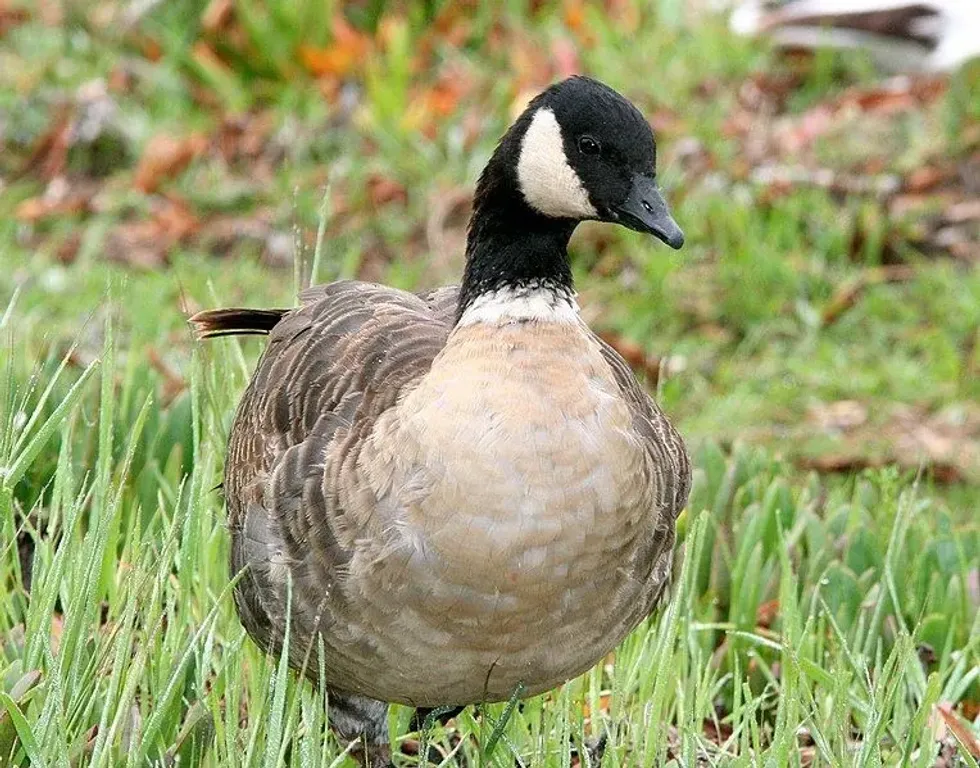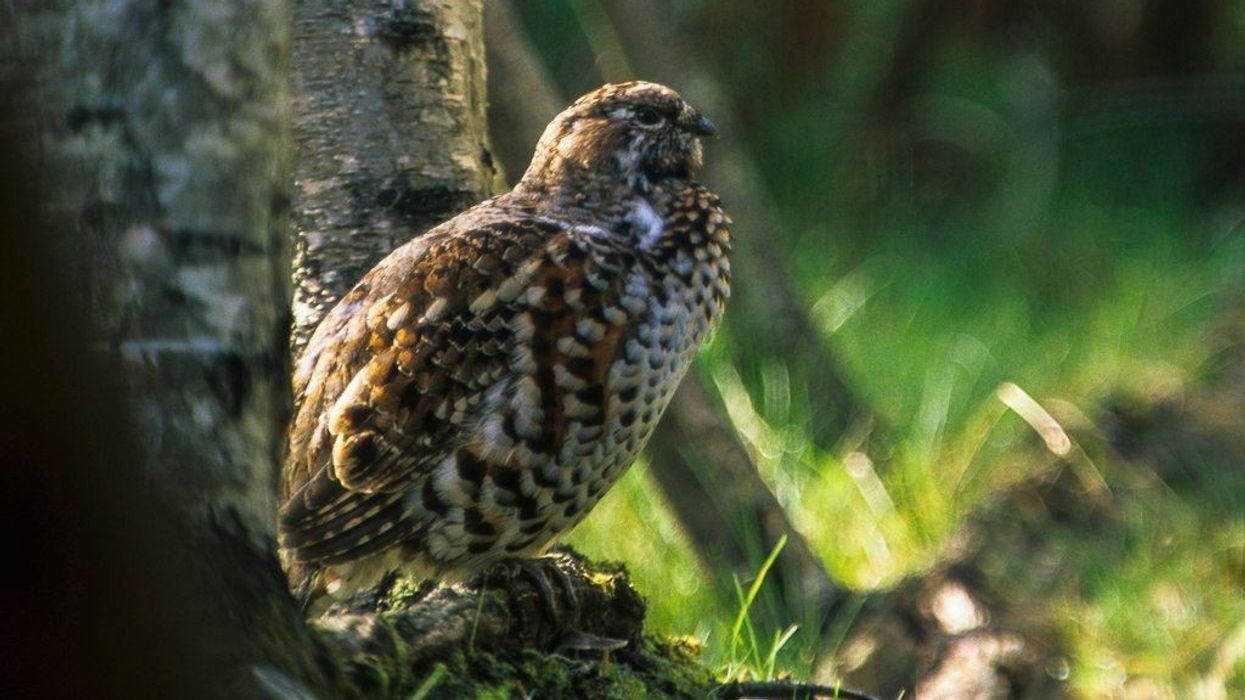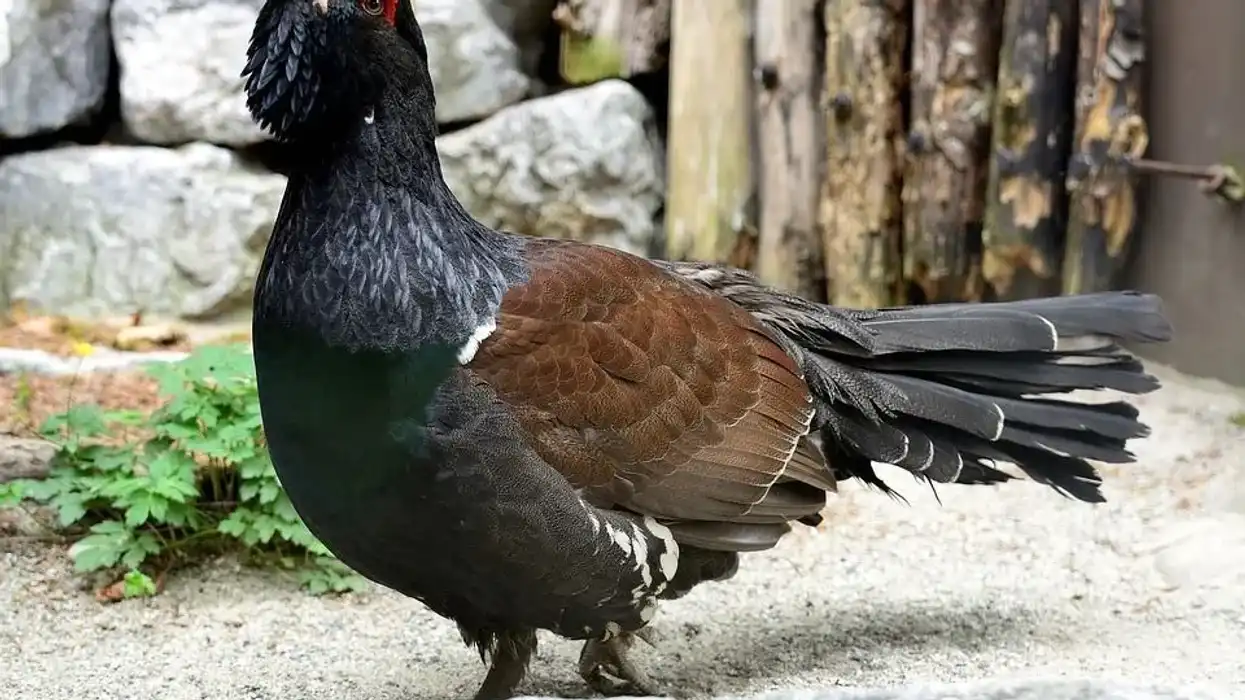Aleutian cackling goose (Branta hutchinsii leucopareia) was formerly a Canada goose as Aleutian Canada goose (Branta canadensis leucopareia) is subspecies among of cackling goose family, Anatidae. This goose belonged to one of the 122 animals, fish, and bird species first recorded by the Lewis and Clark expedition for science.
The Bering cackling goose (B. h. asiatica) is usually included with the Aleutian kind and was named so on the Komandorski and Kuril Islands. This goose population went extinct by 1920 due to predation by Arctic foxes and human beings in Aleutian islands.
Branta genus name is a Latin derivation of old Norse term Brandgas, meaning 'black or burnt goose.' The specific term hutchinsii refers to Thomas Hutchins, an English surgeon for the Hudson's Bay Company.
The cackling geese were originally considered as a species or perhaps a subspecies of Canada geese. However, the American Ornithologists' Union's (AOU) Committee on Nomenclature and Classification split these two into separate species.
There are six extant geese under Branta genus. Also, the subfamily Annserinae includes true geese and swans.
If these facts were interesting, then check out these palm warbler and common murre facts.
Aleutian Cackling Goose Interesting Facts
What type of animal is an Aleutian cackling goose?
Aleutian cackling goose (Branta hutchinsii leucopareia) is a grayish-brown cackling goose of the order Anseriformes, family Anatidae, and phylum Chordata. This species is a small-sized goose and previously occupies Aleutian islands (northern Pacific ocean) for which they got their name.
This bird is a strong diver, flyer, and swimmer. Cackling geese species are highly social outside the breeding season. The male geese can be aggressive during the breeding season towards predators and intruders.
There are four subspecies of cackling goose including Aleutian cackling goose. This goose is also called Tundra goose.
What class of animal does an Aleutian cackling goose belong to?
Aleutian cackling goose (Branta hutchinsii leucopareia) belongs to the Aves class of animals. Another popular goose from the Branta genus is the nene goose.
How many Aleutian cackling geese are there in the world?
The population of the Aleutian cackling goose has made a great recovery since the time when there were less than 800 of them in 1974 to about a population of 200,000 now. This species was the first animal species to be listed as Endangered by the Endangered Species Preservation Act of 1966 in 1967.
Over 60,000 Aleutian cackling geese can be found in the Humboldt Bay area.
Where does an Aleutian cackling goose live?
Aleutian cackling goose population previously occupied a range of habitats in Aleutian islands in the Northern Pacific Ocean towards the western Alaska Peninsula. The winter range of these species extends typically throughout great plains and California (Central Valley), near Modesto in North America.
In this location, they are found in San Joaquin River National Wildlife Refuge and on two privately owned ranches.
What is an Aleutian cackling goose's habitat?
The habitat range of the Aleutian cackling goose includes tundra, marshes, shallows, south lakes, and fields.
Who do Aleutian cackling geese live with?
These goose subspecies live in a flock. A flock of these geese on the ground is called a gaggle. When they fly together typically in V-formation, are called 'wedge or skein.'
How long does an Aleutian cackling goose live?
These goose subspecies live up to 10 - 25 years in the wild. In captivity, if they are looked after properly they can live up to 35 - 40 years of age.
How do they reproduce?
Aleutian cackling goose migration route is from the Northern Pacific ocean to California. These geese subspecies reach sexual maturity at the age of two years.
The nesting commonly occurs in their third year in spring-summer. These species find their mate when they are two years in the breeding season. The adult bird tends to choose mates that are of the same size and they mate for life.
If one of the mates passes away the other will choose a new mate. nesting habits were mostly recorded in April and June.
They build their nest above the shoreline on south-facing turf slopes. The female builds the nest and it is a shallow bowl, which is slightly depressed at the center.
The nest is build up with grasses, weeds, sticks, and reeds lined with soft plant material and down feathers pluck out from the female's chest. Both female and male defend their nest before laying eggs and males are most aggressive during breeding.
Females incubate the eggs while the males defend them. The females produce one egg per breeding season. There can be two to eight creamy-white eggs in a clutch.
The incubation starts once the female lays all the eggs and it lasts for 24 - 28 days. The young use their egg tooth to hatch out of the eggs.
The young come out of the eggs after 8 - 36 hours. The hatchlings have down on their body and their eyes are open.
Within just one to two days of hatching these young can dive, swim, and feed themselves. The parents lead the goslings to feeding areas.
The parent birds use hissing sounds to defend their eggs from intruders or predators. At around 7 - 10 weeks, the goslings can sustain flight. The young stay with their parent birds unit after their spring migration.
The young ones may form a group called 'gang broods' and can contain up to 100 birds. Adults lose their flight feathers and cannot fly until the chicks hatch.
What is their conservation status?
The conservation status of the Aleutian cackling geese is Not Evaluated
Aleutian Cackling Goose Fun Facts
What do Aleutian cackling geese look like?
These birds can be identified by a grayish-brown body with a black head and neck and a white cheek and white neck or throat. They have a shorter neck and round head.
The white cheek patches are divided by a black chin stripe. These birds have a white rump, black tail feathers, and pale grayish-brown colored breast (some can have darker breasts).
The identification of adults from their relatives is made easy by their 0.5 in (12.7 mm) wide white neck ring or collar at the base of their neck. They have a black flat and wide bill and webbed feet.
Around the outside edges of their bill, there are lamellae or teeth, which can be used as a cutting tool. Their dark and large wings can be seen in flight, and even white under tail feathers and U-shaped white rump.
Also, the western-most population is no different, however, their neck ring or collar is always wide and white. Males and females have similar coloration.
The head and neck colors of the immature birds are duller.

How cute are they?
These North American birds have a distinct dark brown body, wide bill, and visible white collar. So, they are considered cute.
How do they communicate?
This bird communicates through vocalization and visualization. Aleutian cackling goose call is a high-pitched 'honking' in flight. They hiss when threatened.
How big is an Aleutian cackling goose?
The length range of these birds is 22-43 in (56-109 cm). Males are slightly larger than females. The swan goose is 10 in (25 cm) longer in length than the Aleutian goose.
How fast can an Aleutian cackling goose fly?
The flight speed of this cackling bird is not yet known. However, the average flight speed of cackling goose is 32 mph (51.5 kph).
How much does an Aleutian cackling goose weigh?
These cackling geese weigh around 3.7-4.36 lb (1.7-2.1 kg). The snow goose is thrice heavier than this cackling goose subspecies.
What are the male and female names of the species?
The female cackling geese are called goose and male cackling geese are called gander.
What would you call a baby Aleutian Cackling Goose?
The baby or young cackling geese are called goslings.
What do they eat?
These geese of North America are mostly herbivores. They feed on green vegetation like clover, grasses, algae, and pondweed, berries, and grains. Usually, while breeding or feeding their young, they eat fish, small insects, mollusks, and small crustaceans.
Are they rare?
Yes, these geese are rare and have a limited habitat range.
Would they make a good pet?
No, these subspecies geese do not make good pets.
Did you know...
The Aleutian cackling geese were considered extinct until 1962 a colony of these birds was discovered in Buldir island.
The subspecies B.h. minima have darker breast color with a brown or purple coat and are smaller than B. h. leucopareia. B.h. minima are called cackling cackling geese or smaller cackling geese. B.h. minima have shifted their winter range from Central Valley, California to western Oregon.
Taverner's cackling geese (B.h. taverneri) are larger than Aleutian cackling geese and have lighter breasts.
The Lindovskaya breed of goose is the largest goose in the world.
Why are they called Aleutian cackling goose?
The name Aleutian comes from their previous home, the Aleutian Islands. The name 'cackling' refers to their high-pitched yelping.
What is the difference between a cackling goose and a Canada goose?
The identification of Canada goose and cackling goose is a challenge as they are virtually identical.
The cackling goose is smaller than the Canadian goose. Canada geese can get two times heavier than cackling geese. Aleutian cackling goose migration path overlaps with that of Canada geese.
Canada geese have more elongated and pointy beaks and S-shaped necks Also, Canada geese are found in Lower 48 states year-round.
Lesser Canada geese share their tundra habitat with the Taverner's cackling geese subspecies.
Here at Kidadl, we have carefully created lots of interesting family-friendly animal facts for everyone to discover! For more relatable content, check out these hamerkop facts and green heron facts pages.
You can even occupy yourself at home by coloring on one of our free printable Cackling goose coloring pages.









